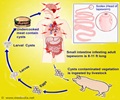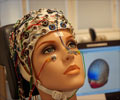A new statistical test that looks at the patterns of high-frequency network activity flow from brain signals can help doctors pinpoint the exact location of seizures occurring in the brain.

The statistical test known as Granger causality spectral analysis was installed in a computer program, and the researchers found they were able to pinpoint where seizures were originating in the brain and detect seizures up to 10 seconds earlier than previously possible.
"Because of a serious deficit in our fundamental understanding of seizure sources and propagation pathways in the brain, there's about a 50 percent cure rate," Dhamala said. "Identifying seizure sources is an imperfect process. Currently, there are no universally established criteria to clinically identify the seizure onset zones useful for successful surgery. So we've tried to contribute to identifying where a seizure comes from so that the doctor can target the mostly likely seizure sources. Without identifying the location, the surgery cannot happen. For the two patients who were going to have surgery, our results helped to identify the locations of their seizures and eliminate some suspected locations for the doctors to operate."
A seizure is an abnormal, uncontrollable electrical discharge in the brain that produces changes in awareness, sensations and motor behaviors. More than 50 million people worldwide and 2.5 million people in the United States suffer from epileptic seizures. Thirty percent of these cases don't respond to medication, making surgery in which a doctor removes the part of the brain where the seizures originate the only option, Dhamala said.
To identify precisely where seizures are coming from, a person is hospitalized, his or her skull is opened and electrodes are implanted in the brain so electrical activity can be monitored when a seizure occurs.
For the two patients in the study awaiting surgery, the researchers used Granger causality analysis to evaluate intracranial EEG (iEEG) recordings of the patients' brains, locate the seizures and determine which parts of the brain are not the sources of the seizures.
Advertisement
The team chose to use Granger causality analysis because it can be applied to any network phenomena that have time series recordings from dynamic processes, such as epileptic seizures. A seizure starts in one part of the brain and spreads to other parts. Granger causality can estimate the direction, strength and frequency of information flow among the recording sites.
Advertisement
In addition, they would like to understand how high frequency network activity in the brain relates to underlying structural abnormalities. In this study, they showed that high-frequency activity can be detected early and used to predict seizures.
Source-Eurekalert














